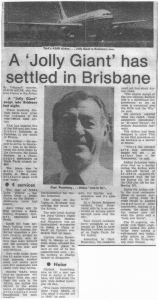From Tiger Moths to Airbus – John Rosenberg
On the 3rd September 2021 we were saddened to hear that Sqn.Capt. Ean Rosenberg passed away after losing his battle with cancer. Ean originally joined the City of Brisbane Company of the Australian Air League as a young cadet in 1939 along with his father and older brother John Rosenberg
John would go on to serve in the RAAF through the war and in the months before his passing we had been working with Ean to write the history of his brother’s service both in the RAAF and post war in airlines. This was completed shortly before his passing and we would like to dedicate this story in his memory.
Captain, we’re going to have a baby onboard!

It was a hot summer’s day in 1948 when the faithful old Douglas C-47 took to the sky from Darwin in the Northern Territory bound for Schofields.
This was another transport run and in the cockpit that day were captain pilot John Rosenberg with co-pilot Fred Dyke at his side. At just 24 years of age, John was already a highly experienced pilot who had served in the Royal Australian Air Force during the Second World War and today he was transporting passengers including patients from Japan where Australia was still involved in the British Commonwealth Occupation Force.
At a stop in Cloncurry, Queensland they were joined by a bright-eyed young Red Cross Officer named Elizabeth Houston from the 113th Australian General Hospital who had come aboard to look after the patients who were being evacuated from Japan. An enterprising young country girl just 20 years of age, she had been brought up riding horses and mustering stock at Belford Station near Maxwelton and at Rainscourt near Richmond, Qld.
As the C-47 bounced up and down in the heat near Julia Creek, one of the female passengers announced that she was going into labour! Elizabeth raced to the cockpit to announce, “Captain, we’re going to have a baby onboard!”. The race was now on to get to their destination before the baby was born, but for the young pilot who has flown Vickers Wellingtons for the RAAF in the Mediterranean it was just another challenge.
Early Days
John Rosenberg was born on the 11th February 1924, the eldest of nine children and attended St. Columba’s Christian Brothers School at Albion.
Having to leave school early, John managed to get a job in the Main Roads Office, and he worked night and day to complete his apprenticeship as a draftsman
During this time, he also became involved in the Australian Air League with his father, joining the City of Brisbane Company which was part of the South Brisbane Division of Queensland Wing (units weren’t known as Squadrons until 1956).

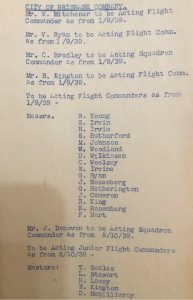
The Company met at the Fortitude Valley State School and Standing Order No. 32, date 12th October 1939 records J Rosenberg and E Rosenberg being promoted to Acting Flight Commander (the equivalent of a Corporal today) effective 1st September 1939.
Working as a draftsman, John developed remarkable skills with his hands and these he carried into his aviation career when he enlisted with the Royal Australian Air Force at the age of 18 on the 26th April 1942 as an airman – Service Number 425756.
Flying Training
During the war, the Commonwealth had a desperate need for aircrew and Australia undertook to provide 28,000 aircrew over three years from 1940. To achieve this, the RAAF established 12 Elementary Flying Training Schools (EFTS) as part of the Empire Air Training Scheme where recruits would receive up to 75 hours of basic aviation instruction on trainers such as the DH82 Tiger Moth.

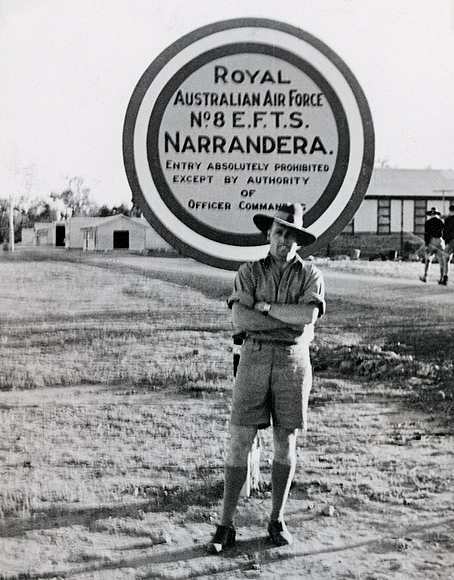

John was stationed to No. 8 Elementary Flying Training School at Narrandera, NSW (today the home of the Leeton / Narrandera Squadron of the Australian Air League!) and here he topped his initial and elementary training, working hard to gain proficiency and skill. Upon graduation, John shipped out to Canada for more advanced training before being sent to England for commission as a Pilot Officer in a bomber Squadron.
458 Squadron
Following a bombing stint in England, John was selected as one of four crews who were to deliver replacement Vickers Wellington bombers to Squadron in North Africa. En route the other three aircraft were shot down and John’s crew was the only one to reach the Casablanca on the western coast of Morocco.
From here he was posted to 458 Squadron RAAF at Bône in Algeria (today known as Annaba) where he would continue to fly the Wellington.
Bône was a crucial location for the invasion of neighbouring Tunisia and town had been the goal of US and British Army in 1942, advancing eastward from Morocco, Oran and Algiers across North Africa. After operating for several month in Egypt, 458 Squadron has been deployed to Bône in October 1943 where they carried out maritime operations and anti-submarine patrols.
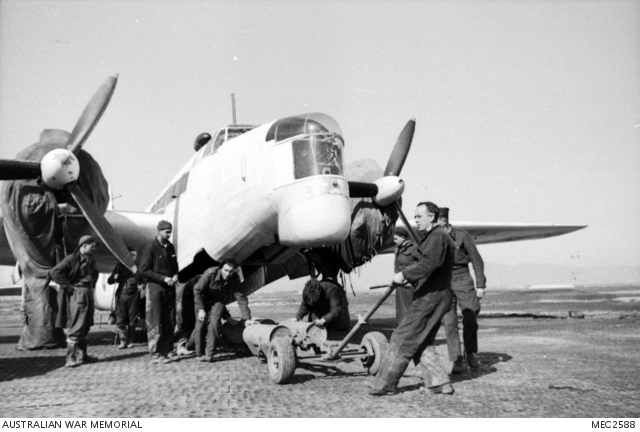


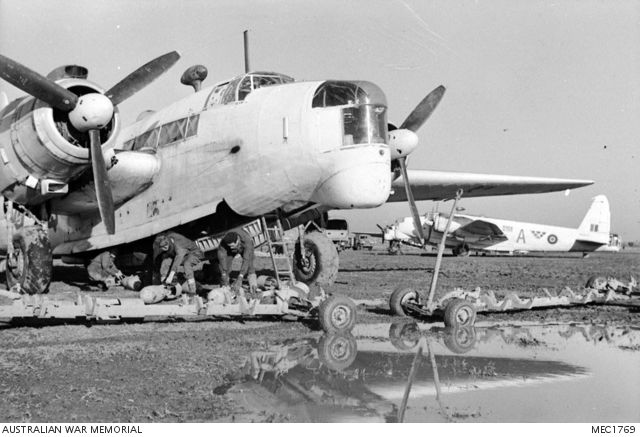
By March the following year the Squadron was on the move again, now based at Alghero Airfield on the Italian island of Sardinia. It was from here that the Squadron sank its first U-Boat, when U-371 was attacked in mid-May.
Log records of the day are typically brief – a few brief sentences to describe over seven hours of patrolling at just 1000 feet above the sea by the crew of six Australian airmen, constantly on the look out for enemy ships, submarines or aircraft while protecting Allied convoys delivering men and supplies for the war effort.

The Squadron Operations Records Books give more of an idea of the operations undertaken; some entries of interest include a 26-hour search by ten aircraft for a single Spitfire pilot missing at sea,
From 16.35 hours on the 3rd April, until 18.40 hours on the 4th April, ten of our Wellingtons carried out an air/sea rescue search off the coast of Pantelleria for dinghy containing a Spitfire pilot. The Captains were W/O Woodhead, F/Sgt Taylor, F/O Malyar, F/Lt Tredwell, F/Sgt Pong, F/O Armstrong, F/ Love, F/O Rosenberg, W/O Kellaher and F/O Feradays. The area was searched completely by all aircraft engaged but they were unable to locate the dinghy. The general weather conditions were good.
458 Squadron Operations Records Book – 3rd April 1944
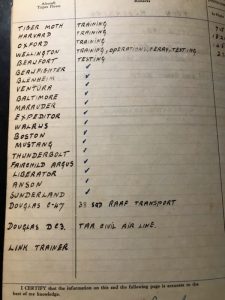
John was also involved in testing of aircraft in service, this page from his logbook shows the wide variety of aircraft he flew including trainers, fighters, transport aircraft, bombers and the Sunderland flying boat!
After completing his service in the Mediterranean, John was transferred back to 38 Squadron in Australia which was active in transporting supplies and personnel between Australia and the front lines in New Guinea and Borneo using Douglas Dakota aircraft (the military version of the DC-3 – also referred to as the C-47).
TAA and the Flying Doctor Service
Following the end of the war, civilian life beckoned and after John was discharged from the RAAF on 1 May 1948, he was quickly snapped up by the new fledgling airline Trans-Australia Airlines, or TAA as it was more commonly known.
The next year, QANTAS handed its Queensland network to TAA along with the two aero medical services which they provided aircraft to when emergencies arose – the Flying Doctor Service of Queensland and the Northern Territory Aerial Medical Service.
As a result of this, John’s early days as a TAA pilot saw him working with the Queensland Flying Doctor Service, flying the old Dragon and Drover aircraft. Nothing was too much for him – flies, heat, and the dust. One nursing sister at Birdsville remarked “John would even help peel potatoes in the kitchen while the flying doctor was delivering babies!”
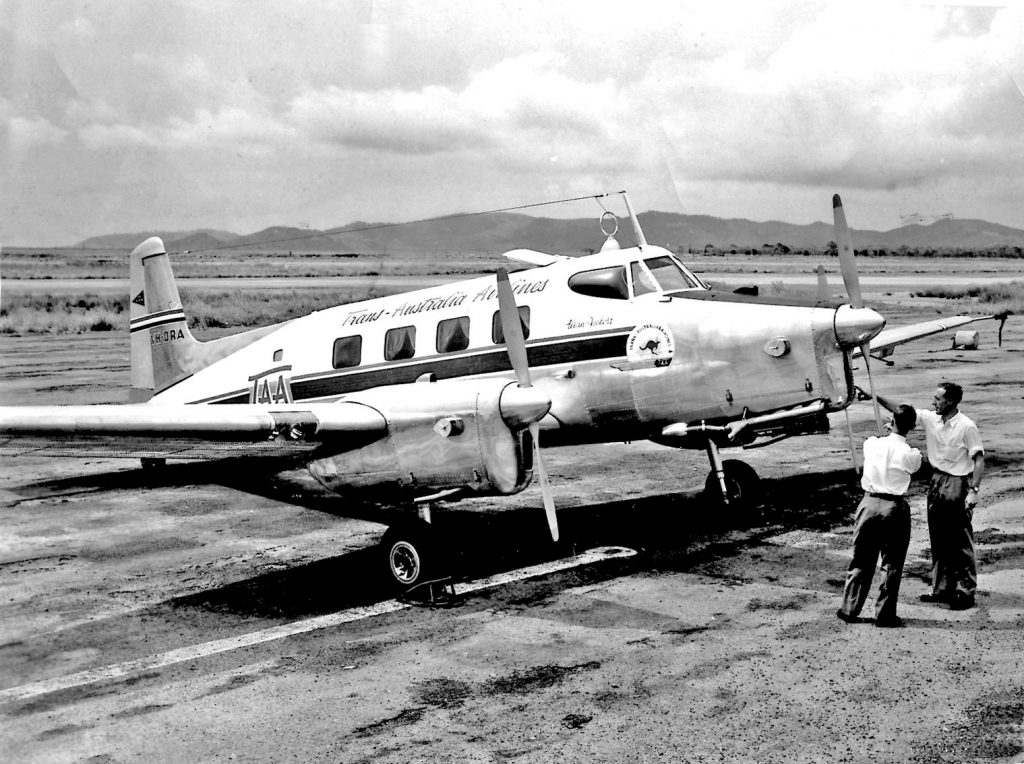
He also saw no rivalries with other pilots or airlines, in December 1951 when a Cairns Ambulance plane went missing the Centralian Advocate newspaper noted,
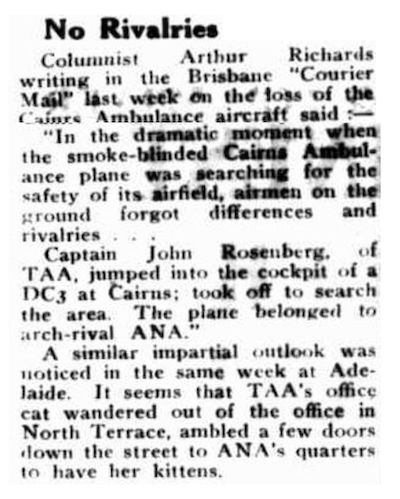
“In the dramatic moment when the smoke blinded Cairns Ambulance plane was search for the safety of its airfield, airmen on the ground forgot differences and rivalries…
Captain John Rosenberg of TAA jumped into the cockpit of a DC3 at Cairns; took off to search the area. The plane belonged to arch-rival ANA”
Centralian Advocate, December 1951
Following the special flight in 1948 with the pregnant lady (her baby was born on the tarmac at Schofields!), John and the young Red Cross Officer Elizabeth Houston met up again several months later and from then on John would always make sure to be rostered for the Townsville to Mt Isa flight – the ten-minute stop-over in Richmond, Qld timed with great precision with Elizabeth having driven 73 miles just to see him!
In February 1951 John and Elizabeth were married in St. Agatha’s Catholic Church, Clayfield and while their home life was determined by TAA postings, their family grew with children Ristan, Christopher and Barbara.
Into the Jet Age
In his time with TAA John was a training Captain, check Captain and Flight Captain. When he was not engaged in flying operations, or ferrying airlines aircraft to Australia from the production centres in Europe or America he was caught up in the administration field. He was Flight Operations Superintendent in Papua—New Guinea. He was Senior Regional Captain in Queensland for over a decade. As a member of the Guild of Air Pilots and Air Navigators John Rosenberg was a Liveryman, Upper Freeman and a Master Air Pilot at the Court of London.
John was a type-specialist on Boeing and Airbus aircraft, and indeed helped introduce the type to Australia, ferrying the second of five wide-bodied A300 Airbus from Toulouse in the south of France to Brisbane Airport in 1981.
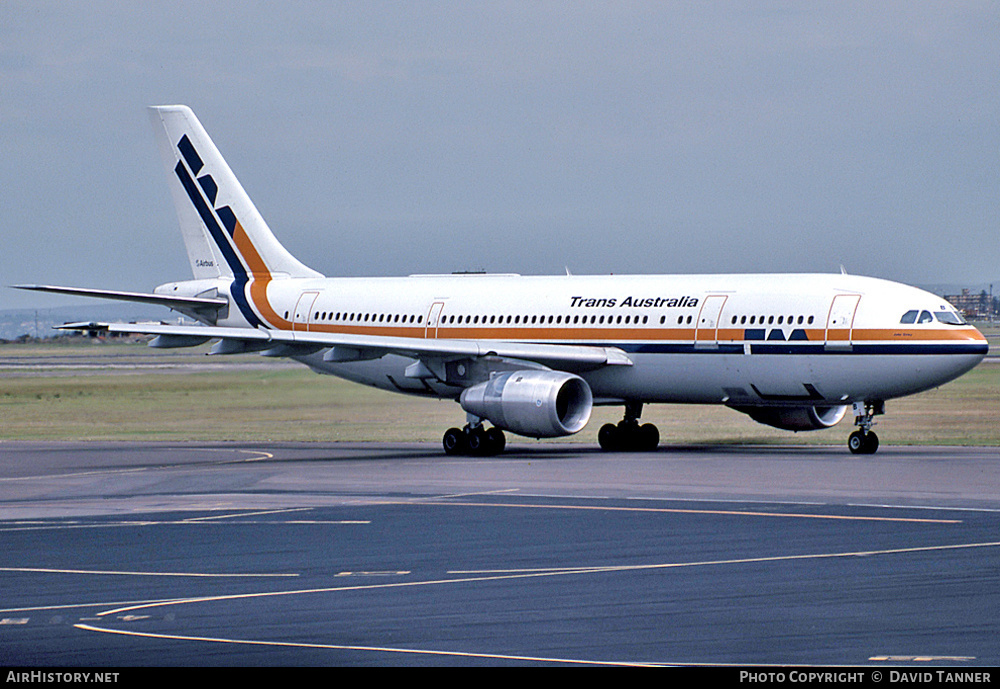
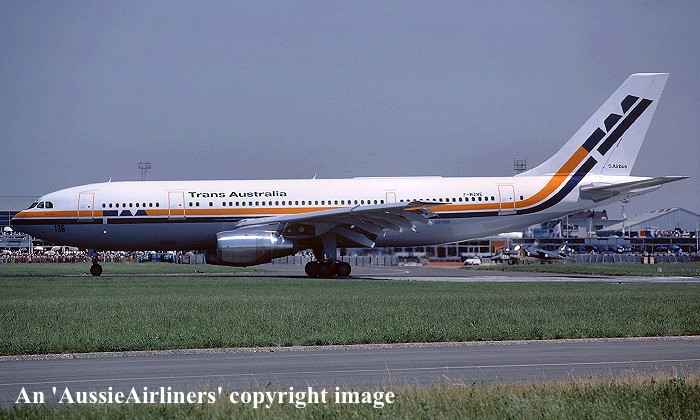
Christened “John Oxley” after the famous explorer and surveyor of Australia in the early period of British colonisation, she joined TAA’s first Airbus – the James Cook – on routes between Brisbane, Sydney, Melbourne and Perth.
Speaking to journalists at the time, John had nothing but praise for the wide-bodied jets
“I’ve flown everything from Tiger Moths to 727s since I started out in 1942,” he said.
“The engine design of the two General Electric jets is a significant improvement as far as noise is concerned over the DC9s and the 727s,”.
Sadly, a few years later John was to learn that he had pancreatic cancer and he passed away on the 5th November 1986.
At the funeral service held at St Dympna’s in Aspley, Queensland, the Very Rev. Fred McKay, an RAAF Chaplain in the Middle East spoke fondly of first meeting John in the war – having been flown to Sardinia from Corsica in a B-25 Mitchell.
Summing up John, Eric Munkman (President of the 458 Association NSW) said, “Flying Officer Rosenberg was one of our best trained leaders”.

Peter Alexander, author of “We Find and Destroy” (the 458 Official History), said “John’s deeds are part of our history, and his friendship is typical of the comradeship which binds us all together.”
Aviation and the RAAF must be a Rosenberg family tradition – today, Jenni Rosenberg, grand-daughter of John’s brother Ean is training to be a Weapons Systems Officer with the RAAF and has a bright career in front of her.
Acknowledgements
This document was compiled by Comr. Brian Grinter and is based on information provided by Sqn.Capt. Ean Rosenberg including the inspiring address given by Very Rev Fred McKay RAAF Chaplain Middle East at John’s funeral in 1986.
Information on the structure of Queensland Wing from before the war provided by Comr. Michael Hodge.
We would like to acknowledge the very kind assistance of the following people and organisations who provided photos for this article
Mr Geoff Goodall
Mr Ben Dannecker
http://www.aussieairliners.org
David and Danny Tanner

